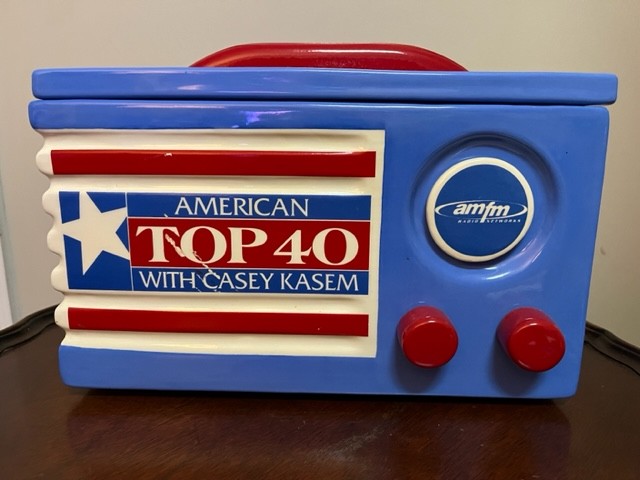
Memorial Day Weekend felt like Groundhog Day. My annual cleaning of the garage. The thought process goes like this: “Let’s move stuff from one side of the garage to the other side of the garage. Maybe we’ll go to the Goodwill donation center and my junk will become someone else’s treasure.”
A new segment was added to the Saturday custom this year. I found Classic American Top 40 Countdowns on the iHeart Radio app. The channel played every annual Top 100 countdown, hosted by Casey Kasem, each year starting in 1970 and ending in 1987. If you don’t know me, I’m a veteran radio talent, brand manager, and modern-day radio/audio enthusiast. I continue to listen to the current American Top 40 hosted by Ryan Seacrest, although, not as aggressively because life gets in the way.
“The numbers get smaller and the hits get bigger.” – Casey Kasem
Countdowns are important because the feature creates perpetual motion. In the radio world, we call it TSL, or Time Spent Listening. Sidebar: if you’re managing a Walmart or an Acura dealership, how do you create perpetual motion with your customers to get them from one point to the next?
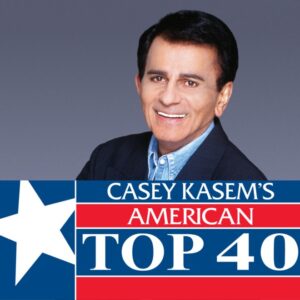
Now, on with the countdown. Casey Kasem’s countdown was the king of all pop music countdowns. The Countdown with Walt “Baby” Love chronicled the best of the R&B chart. Bob Kingsley hosted American Country Countdown, and it continues today as Country Top 40 with Fitz every week from Bob’s former studio. Brother Jon Rivers hosted 20 The Countdown Magazine, contemporary Christian music’s most popular and longest-running countdown, from the mid-80s until 2019. It continues today on more than 1,100 radio stations hosted by William Bryan III. Scott Shannon hosted Rockin’ America: The Top 30 Countdown in the ’80s. Today, he hosts America’s Greatest Hits every weekend. It features pop hits from the ’70s and ’80s.
I gave you a paragraph about countdowns so you would know why the Memorial Day Weekend garage project was highlighted by listening to Classic AT-40 annual Top 100 countdowns on my Apple AirPods Pro. Please don’t think this audio enthusiast was listening to the countdown on a tabletop radio. Although, I have several of those in my collection. And now, the three lessons.
Branding Lesson #1: Then and Now
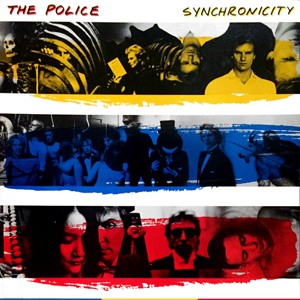
My listening experience with the consecutive countdowns focused on two years: 1983 and 1984. Those years produced a Golden Age of Top 40 radio with artists like Michael Jackson, Bruce Springsteen, Prince, Madonna, Huey Lewis and the News, The Police, John Cougar Mellencamp, Lionel Richie, Billy Joel, and Tina Turner owning the charts.
As someone involved in music research on multiple music formats for decades, I’m fascinated by what worked then and what works now. In the 1983 countdown, King of Pain by The Police was song #54 on the year-end countdown. Let’s fast-forward…after I’ve moved a box of memorabilia from one side of the garage to the other. We’re up to song #1 for 1983. Drumroll, please. Every Breath You Take by The Police was the #1 song for the entire year. Both songs are from the massive album, Synchronicity, and were big hits in 1983. Obviously, Every Breath… was the bigger hit.
Forty years later, it’s not even close. I looked at airplay for the week ending 5/27/23. Every Breath You Take got 2,811 spins from monitored radio stations in the U.S., according to Mediabase. In the same week, King of Pain received 88 spins.
Think about your brand. The goods and services that worked then may not be “hits” now. Subtraction of excess and sub-performing products is obvious if you have the intel. However, I suggest you work the problem backward. We know what we shouldn’t be doing. Is there a “hit” then that continues to be a “hit” now? Maybe it’s a top-selling menu item we’ve had for 30 years. We won’t remove it from the menu, but we fail to promote it because we know it works. It’s like the husband who says, “Yeah, she knows I love her because we’ve been married 50 years.” How would those next years be more enjoyable if he told her he loved her every day? It’s the same with our brands. If we have something working Then and Now, be thankful and promote those virtues.
Branding Lesson #2: Be Aware
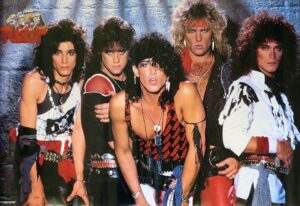
During the 1984 countdown, Casey played song #96 for the year: Round and Round by the metal hairband, Ratt. Seven songs later at #89, it was the soft rock ballad, Think of Laura, by Christopher Cross. One of the fun things about these classic countdowns is hearing the variety of popular music genres. If you’re a musicologist, you know these two songs are important transitional examples. Ratt is metal music moving into mainstream radio, similar to Quiet Riot the previous year. The Christopher Cross song is the soft rock genre gracefully exiting stage left in the early and mid-’80s.
Is there someone on your staff aware of cultural changes and how those changes affect your brand positively or negatively? The answer is almost always yes. Find that person and listen. Then we need managers who are comfortable with being uncomfortable. It doesn’t mean we change our mission or purpose, but we want to be aware so we’re not overheard saying, “Why didn’t we see that coming?”
Branding Lesson #3: Acknowledge The Band
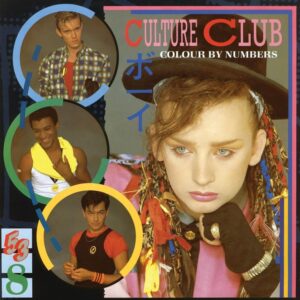
Another moment in the 1984 countdown that made me stop and take note was song #75: Culture Club’s Church of The Poison Mind. The band was a big deal on the pop charts in the early and mid-80s. Their flamboyant lead singer, Boy George, was the center of attention. When you heard a Culture Club song on the radio or MTV, you thought of Boy George. DJs often introduced the band’s songs as “Boy George and The Culture Club.”
When Casey talked about the Church… song during the countdown, he said, “And there’s Boy George, Roy Hay, Mikey Craig, and Jon Moss…The Culture Club.” By 1984, Casey Kasem and the countdown writers knew the focal point was Boy George, but they acknowledged the whole band. It was a cool moment.
When you’re building and sustaining your brand, don’t forget the band. Often, this gets scripted in the planned public acknowledgment. Fine, but the best kind is the spontaneous one-to-one recognition of an employee’s contribution to the brand. If you want your grocery store shelves of cans to be perfectly symmetrical, you have to show the stockers how you want it done. If you want it done every time, then high-five them when you see the beauty of the black beans in a straight line with the logos facing outward. We’re likely to see the behavior return if someone knows their actions get positive recognition.
This week, let’s research what continues to work after all these years and promote it as if our brand depends on it. Let’s be aware of the cultural changes and movements around us. If we’re not aware or don’t have the gift of noticing, then let’s find someone to help us notice. Finally, introduce the band members to the audience. Then, off mic, walk back to the bass player after the song and say, “That was a sweet riff you just played.”
(This originally appeared on LinkedIn on June 2, 2023, https://bit.ly/3V3Ecqf )

Ron Harrell
As the founder of Harrell Media Group, I offer Fractional Management, Talent Coaching, and Consulting for radio and audio brands. Contact me for a No Copy & Paste review. https://www.harrellmediagroup.com


